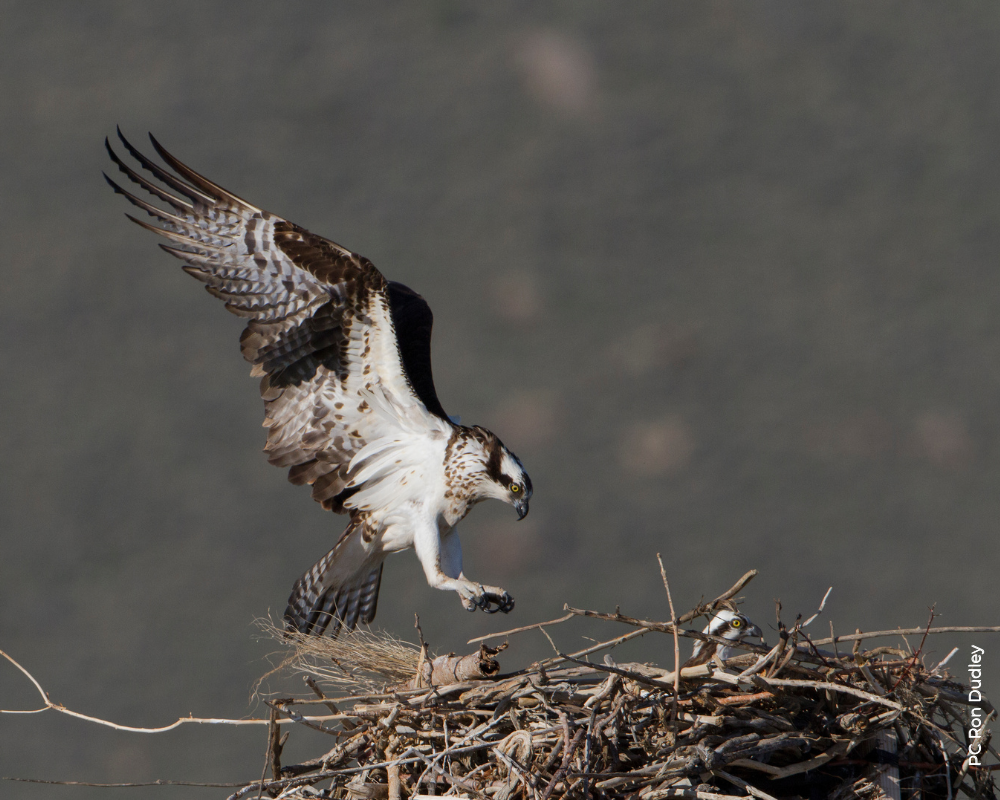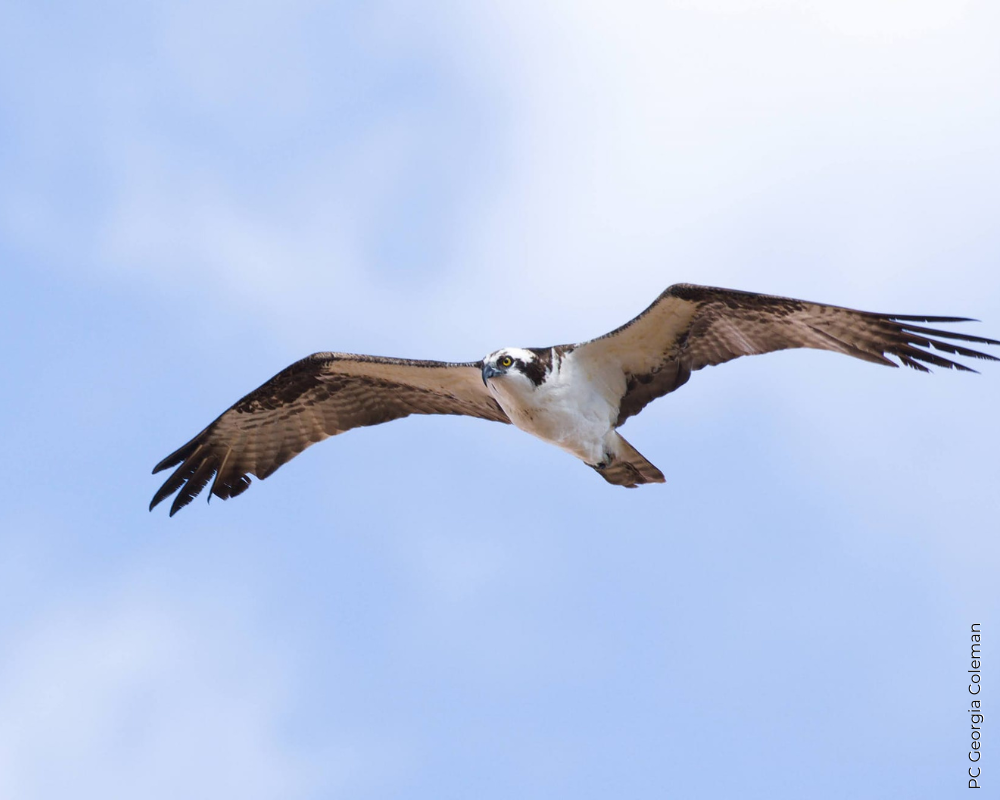Overview
Osprey is one of the most unique North American raptors. They are built like a gull, dive for fish feet first, and are distinctly plumaged. Osprey is a large bird, only slightly smaller than an eagle, but with a slimmer build. Ospreys are easy to identify even at long distances, making them a favorite among birders. But, they are sometimes confused with the similar Bald Eagle or a large gull. Osprey is found near water when breeding, building bulky stick nests in dead trees, on tall light fixtures, power poles, billboards, or platforms provided for them.
Ospreys prey almost exclusively on fish and rarely scavenge like eagles. Instead, they actively search and hover over waterways until they spot a fish close to the surface. Then, they plunge feet-first into the water to seize medium-sized or sometimes surprisingly large fish with their powerful talons. Ospreys have specialized feet for grasping fish: all four talons are curved more so than on other raptors, and the toes have tiny spines or “spicules” on the bottom that help them hang on to their slippery prey. Most raptors have three toes in the front and one in the back, but Osprey can rotate the outer toe backward to help them carry fish, which they typically do head-first for optimal aerodynamics.




